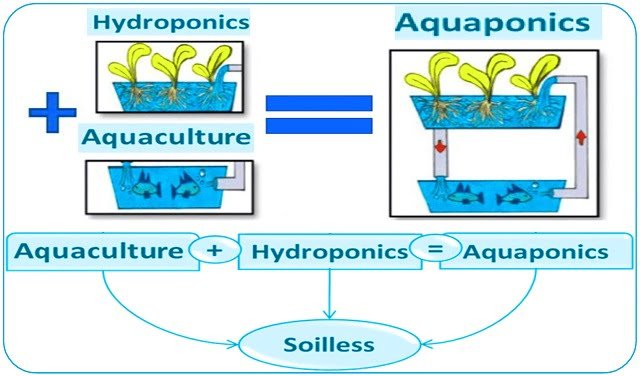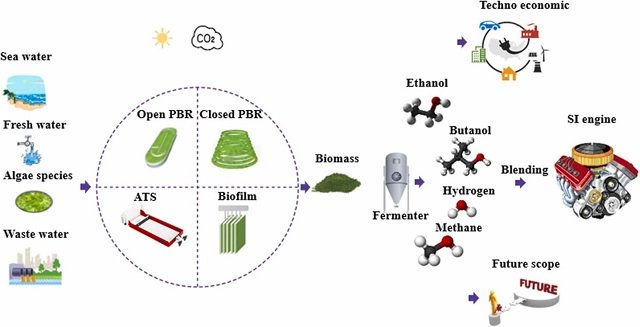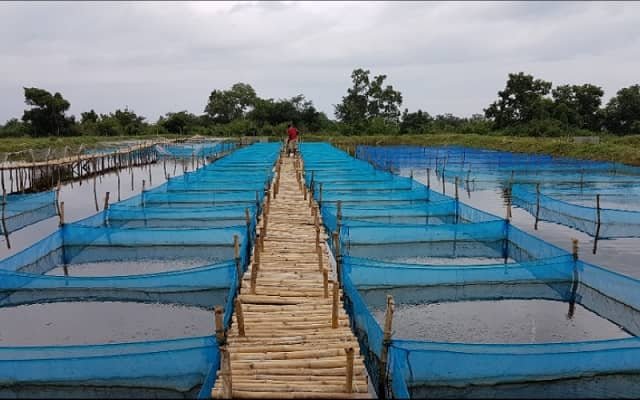
Freshwater aquaculture is a pillar for global food security, contributing nearly 77% of the world’s farmed fish. However, the intensive pond production model faces a critical ecological challenge: eutrophication. The excess of nutrients, from uneaten feed and excreta, triggers cyanobacteria (blue-green algae) blooms, a problem that limits the sector’s sustainability.
In response, solutions based on nature itself are emerging. Ecological floating beds (EFBs) are presented as an efficient, low-cost, and environmentally friendly remediation technology. But are all plants equally effective? A recent study published in Aquaculture investigated the potential of three aquatic plant species not only to clean the water but also to improve the health of the cultured fish.
An experiment for a greener aquaculture
The study published by scientists from Henan Normal University, the Observation and Research Station on Water Ecosystem in Danjiangkou Reservoir of Henan Province, and The National Ecological Quality Comprehensive Monitoring Station (Hebi Station) simulated the conditions of an aquaculture pond affected by a cyanobacterial bloom. The researchers used 100-liter tanks and organized them into five different groups to compare the effects over a 30-day period:
- Three experimental groups: Each with one species of floating plant (Eichhornia crassipes, Pistia stratiotes, and Ipomoea aquatica), along with common carp juveniles (Cyprinus carpio).
- Two control groups: One group with plastic grass to simulate the effect of shade without the biological activity of the plant, and a final group with only fish and eutrophic water.
During the experiment, researchers monitored key parameters such as pH, algal biomass (measured as chlorophyll a), and the composition of the algal community. Additionally, the stress response in the plants and fish was analyzed by measuring indicators of oxidative stress in their tissues.
Key findings: A double benefit
The results showed that floating plants offer a dual-objective strategy: improving water quality and, at the same time, the health of the fish.
Goodbye cyanobacteria, hello good algae
The most outstanding finding was the impressive ability of the three plants to suppress harmful cyanobacteria. After 30 days, the inhibition rates were remarkable:
- Eichhornia crassipes: 87.92% inhibition.
- Pistia stratiotes: 70.07% inhibition.
- Ipomoea aquatica: 96.32% inhibition, proving to be the most effective.
But the story doesn’t end there. The plants not only eliminated the bad but also promoted the good. While cyanobacteria continued to dominate in the control groups, the algal community in the tanks with plants changed, favoring the growth of green algae. Again, I. aquatica led this positive change, increasing the abundance of green algae by almost 29%. This change is fundamental, as green algae are an essential link in the aquatic food chain, facilitating better energy flow and enhancing fishery productivity.
Less stressed and healthier fish
A eutrophic environment dominated by cyanobacteria generates a high level of stress in fish. The study confirmed this by measuring malondialdehyde (MDA), a key indicator of cellular damage from oxidative stress.
Stay Always Informed
Join our communities to instantly receive the most important news, reports, and analysis from the aquaculture industry.
At the end of the experiment, fish in the control groups (without plants) showed a significant increase in their MDA levels. In contrast, the carp that lived with any of the three floating plant species had significantly lower levels of MDA. This indicates that the tissue damage in these fish was considerably less, demonstrating a greater antioxidant capacity and better overall health thanks to the action of the plants.
The secret is in the oots: An army of microbial helpers
The researchers went a step further and analyzed the communities of microorganisms inhabiting the plant roots. They discovered that these roots host a complex community of bacteria that play a crucial role in water restoration.
The study reports bacterial phyla such as Proteobacteria and Bacteroidetes, known to contain strains capable of degrading microcystins, the toxins produced by cyanobacteria. Furthermore, specific genera with very interesting functions were found:
- Flavobacterium: Inhibits the growth of cyanobacteria and is an indicator of good water quality.
- Pseudomonas and Exiguobacterium: Are efficient at degrading microcystins, reducing water toxicity.
- Aeromonas: Some strains of this genus can act as probiotics, improving the immune response of fish.
This synergy between the plants and their associated microorganisms enhances the elimination of toxins and the general improvement of the pond ecosystem.
What does this mean for the aquaculture producer?
This study provides a solid theoretical basis for applying an ecological and low-cost solution to a persistent problem. The key conclusions for the sector are:
- An effective management tool: Floating beds are a viable strategy to control cyanobacterial blooms and improve water quality naturally, reducing dependence on physico-chemical treatments that can cause secondary stress in fish.
- The choice of plant matters: Although the three plants studied were effective, Ipomoea aquatica (water spinach) stood out for its superior ability to inhibit cyanobacteria and promote beneficial green algae.
- Improved animal welfare: Creating a healthier aquatic environment directly translates into less stressed and healthier fish, which can have a positive impact on growth and survival rates.
- Towards sustainable production: Integrating these phytoremediation techniques is a step forward towards a more sustainable aquaculture that protects both water resources and the biological integrity of production systems.
In summary, the research shows that looking to nature gives us the keys to a more resilient aquaculture. Floating plants are not just a “green filter,” but a dynamic ecological system that regulates the algal community, detoxifies the water through its microbial partners, and ultimately promotes an environment where fish can thrive.
Contact
Jing Dong
Henan Normal University, Jianshe Road
Xinxiang 453007, Henan, China.
Email: happydj111@163.com
Reference
Li, L., He, M., Ge, Y., Wei, W., Wu, M., Sha, Y., Zhang, S., Dong, J., Li, X., Gao, X., & Yuan, H. (2025). Effects of floating bed plants on remediation of eutrophic ponds and cultured species of Cyprinus carpio. Aquaculture, 609, 742844. https://doi.org/10.1016/j.aquaculture.2025.742844
Editor at the digital magazine AquaHoy. He holds a degree in Aquaculture Biology from the National University of Santa (UNS) and a Master’s degree in Science and Innovation Management from the Polytechnic University of Valencia, with postgraduate diplomas in Business Innovation and Innovation Management. He possesses extensive experience in the aquaculture and fisheries sector, having led the Fisheries Innovation Unit of the National Program for Innovation in Fisheries and Aquaculture (PNIPA). He has served as a senior consultant in technology watch, an innovation project formulator and advisor, and a lecturer at UNS. He is a member of the Peruvian College of Biologists and was recognized by the World Aquaculture Society (WAS) in 2016 for his contribution to aquaculture.




